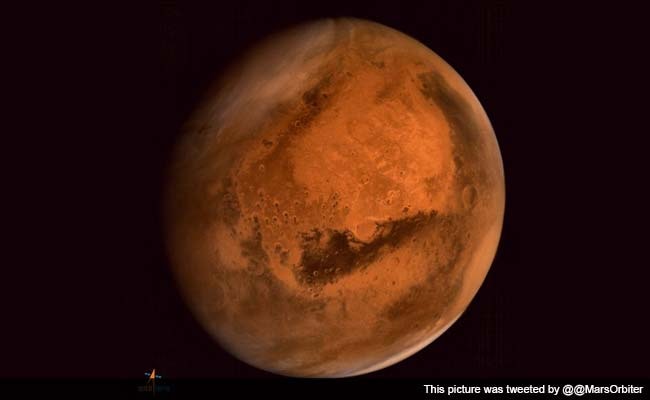
Mars has belts of glaciers consisting of frozen water equivalent to over 150 billion cubic metres -enough to cover the entire surface of the red planet with more than one metre of ice, scientists say.
A thick layer of dust covers the glaciers, so they appear as surface of the ground, but radar measurements show that underneath the dust there are glaciers composed of frozen water.
New studies have calculated the size of the glaciers and thus the amount of water in the glaciers. It is the equivalent of all of Mars being covered by more than one meter of ice.
Several satellites orbit Mars and on satellite images, researchers have been able to observe the shape of glaciers just below the surface.
For a long time scientists did not know if the ice was made of frozen water (H2O) or of carbon dioxide (CO2) or whether it was mud.
Using radar measurements from the NASA satellite and Mars Reconnaissance Orbiter, and combining them with ice flow modelling, researchers have been able to determine that is water ice.
"We have looked at radar measurements spanning ten years back in time to see how thick the ice is and how it behaves," said Nanna Bjornholt Karlsson, from the Niels Bohr Institute at the University of Copenhagen.
"A glacier is after all a big chunk of ice and it flows and gets a form that tells us something about how soft it is.
We then compared this with how glaciers on Earth behave and from that we have been able to make models for the ice flow," said Karlsson.
The glaciers are located in belts around Mars between the latitudes 300-500. They are found on both the northern and southern hemispheres.
}
From some locations on Mars researchers have good detailed high-resolution data, while they only have more sparse data from other areas.
But by supplementing the sparse data with information about the flow and form of the glaciers from the very well studied areas, they have been able to calculate how thick and voluminous the ice is across the glacier belts.
"We have calculated that the ice in the glaciers is equivalent to over 150 billion cubic meters of ice - that much ice could cover the entire surface of Mars with 1.1 meters of ice. The ice at the mid-latitudes is therefore an important part of Mars' water reservoir," said Karlsson.
That the ice has not evaporated out into space could actually mean that the thick layer of dust is protecting the ice, researchers said.
The atmospheric pressure on Mars is so low that water ice simply evaporates and becomes water vapour. But the glaciers are well protected under the thick layer of dust.
The findings are published in the journal Geophysical Research Letter.
Track Latest News Live on NDTV.com and get news updates from India and around the world

